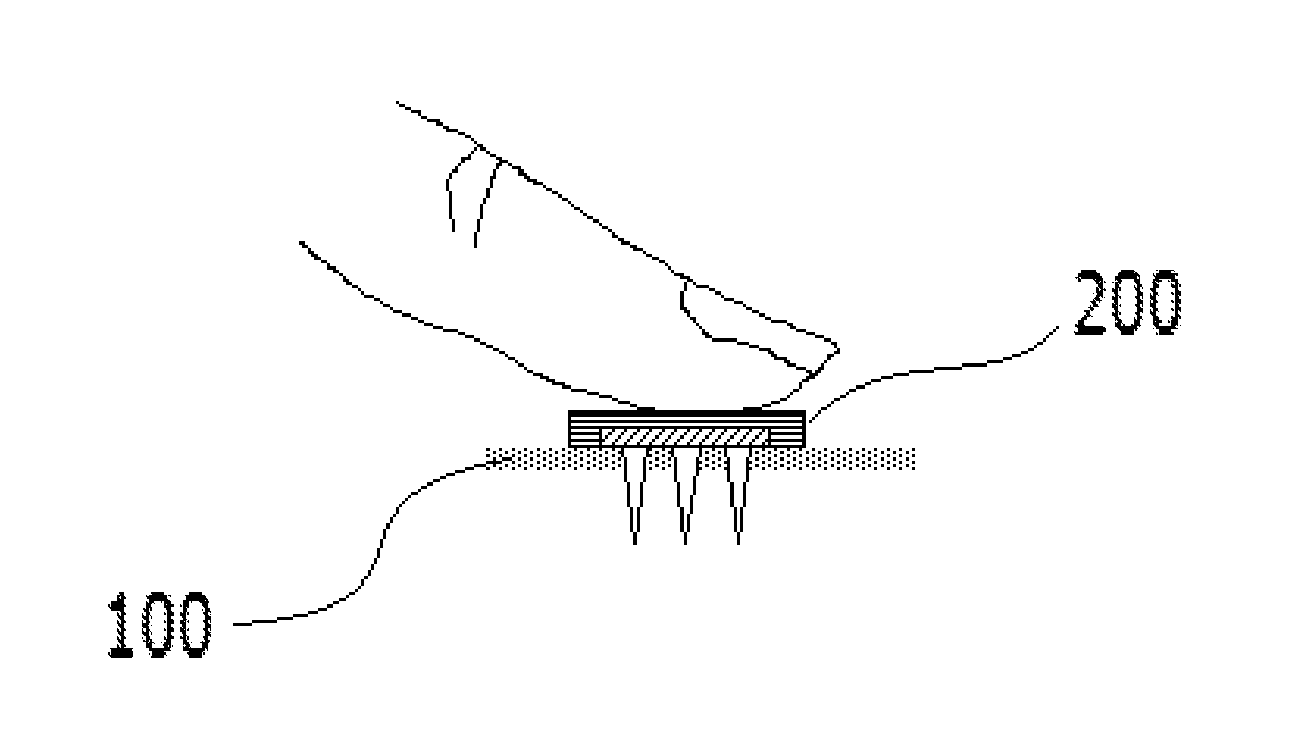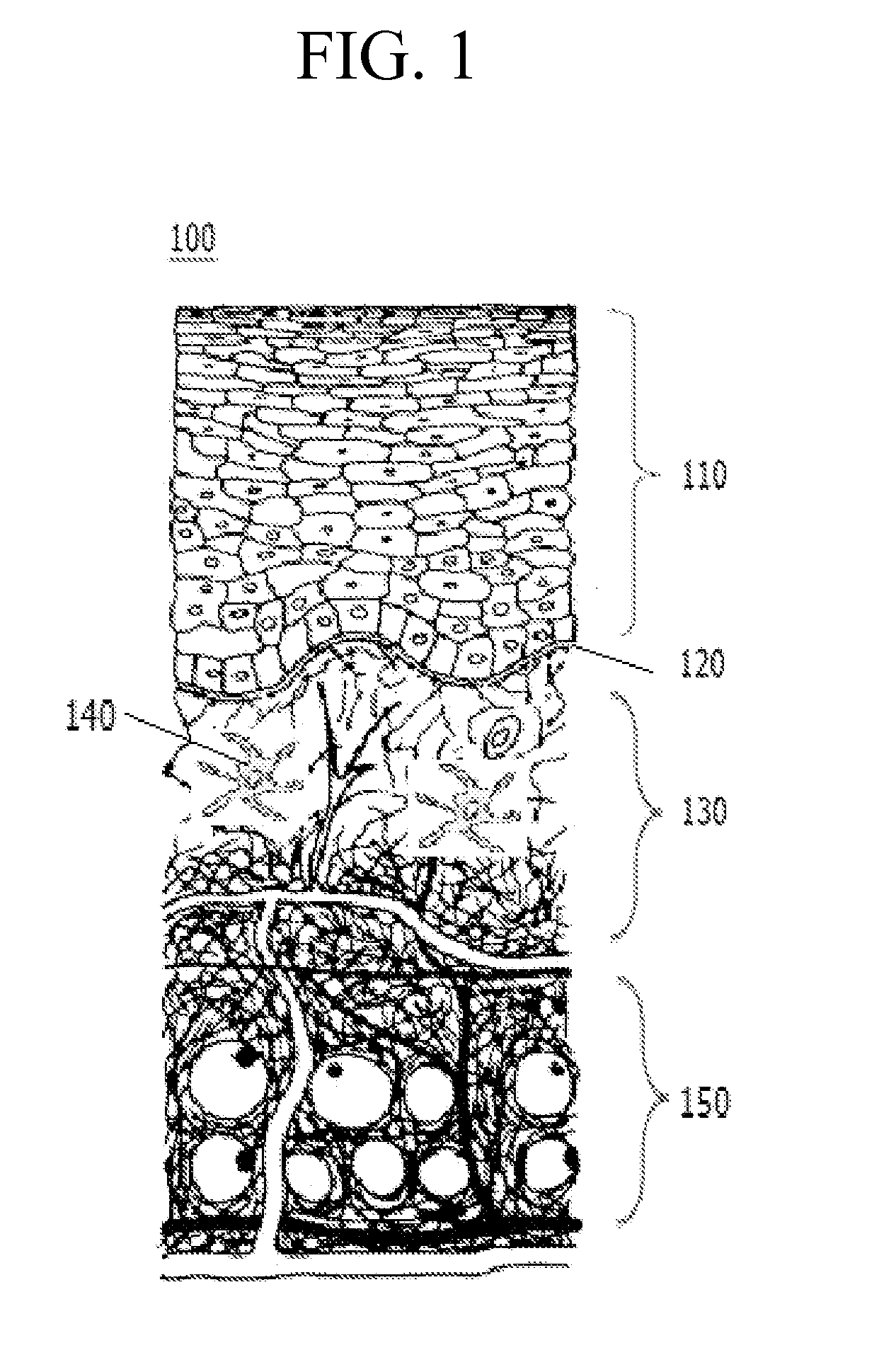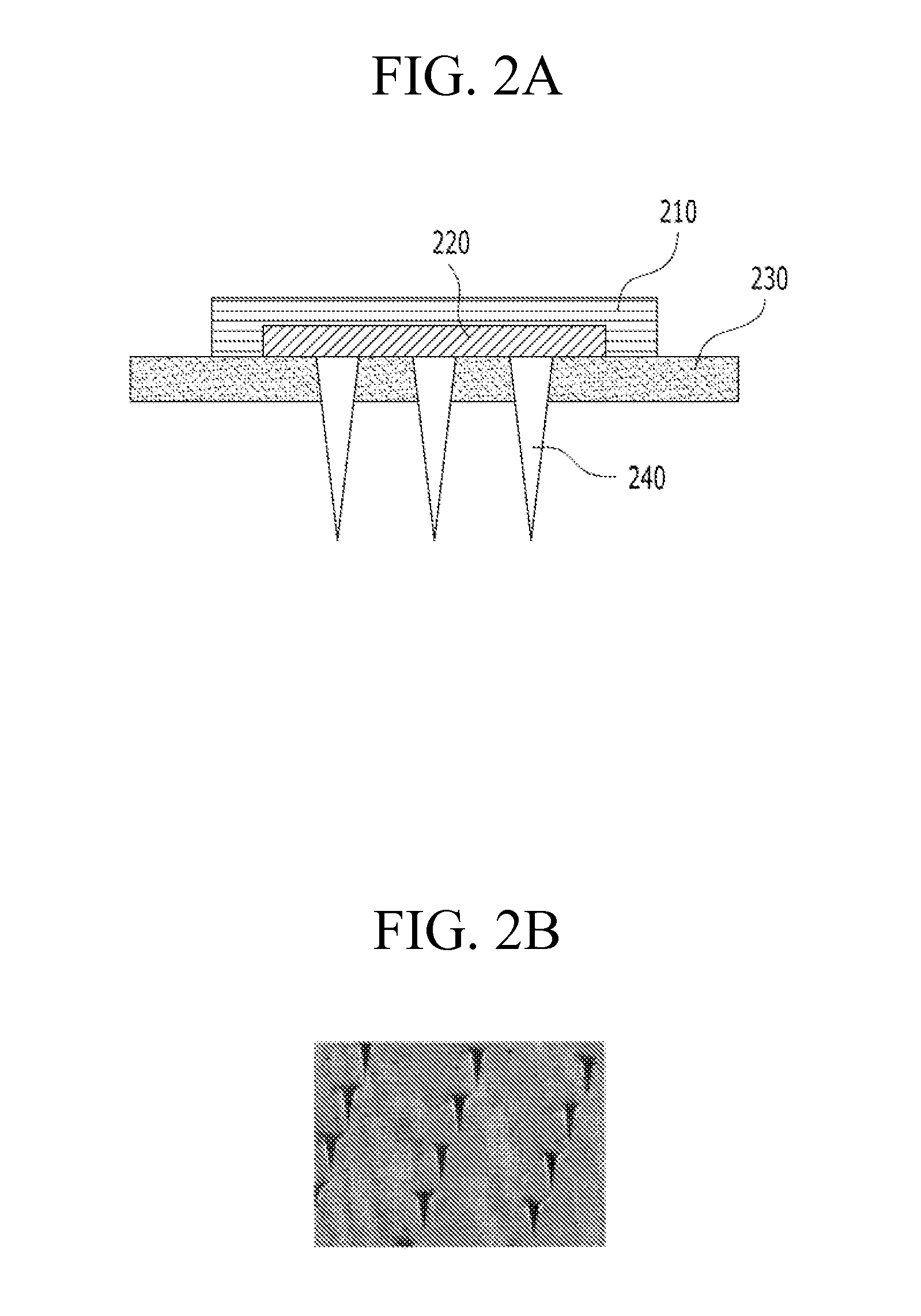Soluble microneedle arrays for buccal delivery of vaccines
- Summary
- Abstract
- Description
- Claims
- Application Information
AI Technical Summary
Benefits of technology
Problems solved by technology
Method used
Image
Examples
Example
BEST MODE
[0035]Reference will now be made in detail to embodiments of the present disclosure, examples of which are illustrated in the accompanying drawings, wherein like reference numerals refer to like elements throughout. The embodiments are described below, in order to explain the present disclosure by referring to the figures.
[0036]The practice of the present disclosure will employ, unless otherwise indicated, conventional methods of engineering, chemistry, biochemistry, pharmacology, and drug delivery, within the skill of the art. Such techniques are explained fully in the literature. All publications, patents and patent applications cited herein, whether supra or infra, are hereby incorporated by reference in their entirety.
[0037]A case in which any one part is connected with the other part includes a case in which the parts are directly connected with each other and a case in which the parts are indirectly connected with each other with other elements interposed therebetween...
PUM
| Property | Measurement | Unit |
|---|---|---|
| Length | aaaaa | aaaaa |
| Length | aaaaa | aaaaa |
| Length | aaaaa | aaaaa |
Abstract
Description
Claims
Application Information
 Login to View More
Login to View More - R&D
- Intellectual Property
- Life Sciences
- Materials
- Tech Scout
- Unparalleled Data Quality
- Higher Quality Content
- 60% Fewer Hallucinations
Browse by: Latest US Patents, China's latest patents, Technical Efficacy Thesaurus, Application Domain, Technology Topic, Popular Technical Reports.
© 2025 PatSnap. All rights reserved.Legal|Privacy policy|Modern Slavery Act Transparency Statement|Sitemap|About US| Contact US: help@patsnap.com



